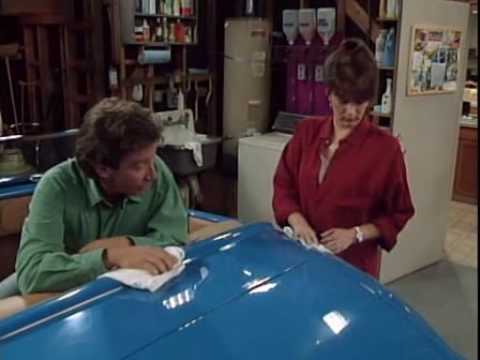
Moths are often considered a nuisance, but they actually play an important role in the environment. They can provide food for birds, bats, and other wildlife, while their larvae can help to break down organic material.
On the other hand, they can also be damaging to crops and trees if their populations get out of hand. So what exactly are moths? How do they differ from butterflies? And should you get rid of them if you find them in your lawn? Let’s take a look.
What Are Moths?
Moths are part of the order Lepidoptera and share many characteristics with their close relatives—butterflies. However, there are some distinct differences between the two species that make them easy to tell apart.
For starters, moths generally have duller colors than butterflies; usually browns, grays, whites or black. They also tend to be larger and hairier than butterflies. Additionally, moths fly at night while butterflies are generally active during the day.
Moth Habits & Behaviors
Most moth species feed on nectar from flowers as adults, while caterpillars feed on leaves or other vegetation depending on the species. Some species eat fabrics or carpets made of natural fibers such as wool or cotton; these are known as clothes moths and can cause significant damage to clothing and upholstery if not controlled properly.
Additionally, many moth species lay eggs near light sources such as street lamps or porch lights; this is because light attracts certain insects that serve as food for their larvae when they hatch after a few days or weeks.
Are Moths Dangerous for Your Lawn?
Moth populations can quickly become overwhelming if left unchecked; this is especially true if you live in an area with a lot of vegetation or trees nearby that could provide food for their larvae when they hatch from eggs laid near lights at night. In these cases it is important to take steps to control the population before it gets out of hand; this could include using insecticides or traps specifically designed for moths around your yard or home.
It’s also important to keep an eye out for signs of infestation such as webs around plants or holes in fabrics caused by clothes moths feeding on natural fibers like wool or cotton. Check out this guide for specific information on controlling armyworms.
Conclusion
In conclusion, moths play an important role in the environment by providing food for birds and bats while helping break down organic material with their larvae. However, if populations become too large they can cause damage to crops and trees as well as fabrics made from natural fibers like wool or cotton if left unchecked. So it’s important to keep an eye out for signs of infestations so you can take steps to control them before it’s too late!
With some simple preventative measures like using insecticides and traps specifically designed for moths around your yard or home you should be able to keep your lawn free from these pesky critters!…
 With perks like free Wi-Fi, complimentary coffee and tea, a supervised kids play area and a pleasant, non-commission staff, Residing Areas makes searching for dwelling furniture fun and easy. Whenever you enroll, we show you precisely the easiest way to arrange an internet store all your particular person and each time we enhance our system, your web site is updated in real time. At Veh & Son yow will discover each type of dining and bedroom furniture that can certainly depart you amazed.
With perks like free Wi-Fi, complimentary coffee and tea, a supervised kids play area and a pleasant, non-commission staff, Residing Areas makes searching for dwelling furniture fun and easy. Whenever you enroll, we show you precisely the easiest way to arrange an internet store all your particular person and each time we enhance our system, your web site is updated in real time. At Veh & Son yow will discover each type of dining and bedroom furniture that can certainly depart you amazed. House Enchancment Expert is an easy method to get a quality job for vitality equipment substitute and other retrofit tasks. The principal and curiosity portion of any skipped payment will stay excellent until the end of the term of your mortgage at which time the skipped fee have to be repaid. Deposit merchandise offered by Wells Fargo Bank, N.A. Member FDIC. These duties are frequent to many a home enchancment venture, so a power drill is a useful item in its personal right.
House Enchancment Expert is an easy method to get a quality job for vitality equipment substitute and other retrofit tasks. The principal and curiosity portion of any skipped payment will stay excellent until the end of the term of your mortgage at which time the skipped fee have to be repaid. Deposit merchandise offered by Wells Fargo Bank, N.A. Member FDIC. These duties are frequent to many a home enchancment venture, so a power drill is a useful item in its personal right. All of us may use just a few ideas or tips for protecting the home clean. Just sprinkle the mixture of baking soda, dried rosemary, and lavender oil on your carpets, let it sit for 15-20 minutes, and vacuum it up for a contemporary-smelling room. As for smaller items like wallets, purses, and tote baggage, the CDC does not have particular laundering suggestions, but cleansing and disinfecting them in accordance with the producers’ instructions may help lower their germ load.
All of us may use just a few ideas or tips for protecting the home clean. Just sprinkle the mixture of baking soda, dried rosemary, and lavender oil on your carpets, let it sit for 15-20 minutes, and vacuum it up for a contemporary-smelling room. As for smaller items like wallets, purses, and tote baggage, the CDC does not have particular laundering suggestions, but cleansing and disinfecting them in accordance with the producers’ instructions may help lower their germ load. Every factor that you’ll want to know to begin your private enterprise. All information, software, artwork, logos, textual content, video, audio, footage, logos, and different content material on the Website or embodied in our services and products, including all related mental property rights (collectively, the “Web site Content material”), is the property of My Bob’s and its licensors, or is used beneath rules of truthful use.
Every factor that you’ll want to know to begin your private enterprise. All information, software, artwork, logos, textual content, video, audio, footage, logos, and different content material on the Website or embodied in our services and products, including all related mental property rights (collectively, the “Web site Content material”), is the property of My Bob’s and its licensors, or is used beneath rules of truthful use. Every home — large, small, house or vacation house — will get soiled. Come spring, it is often time to do a deep cleansing on the inside and out of doors of your home. Industrial mushy scrub cleaners can include sturdy chemical elements, however you can get your tub and shower just as clear with a do-it-yourself cleaner. Strive mini- cleansing strategies at your own home, it will probably cut back the gathered dust and dust.
Every home — large, small, house or vacation house — will get soiled. Come spring, it is often time to do a deep cleansing on the inside and out of doors of your home. Industrial mushy scrub cleaners can include sturdy chemical elements, however you can get your tub and shower just as clear with a do-it-yourself cleaner. Strive mini- cleansing strategies at your own home, it will probably cut back the gathered dust and dust. Our intensive new assortment of Digital 2019 Tales reveals that web clients in the mean time are rising by a median of a number of million new prospects day-after-day, with all the distinctive ‘Subsequent Billion Customers’ now on-line. They accomplished the project in a timely manner & we are completely pleased. Home Enchancment ran for eight seasons (and a total of 204 episodes) on ABC, from September 1991 by May 1999. Tim’s new assistant, Heidi, performed by Debbe Dunning , replaced Anderson because the Instrument Time Lady for the next third season, starting with “Possibly Baby”, which aired on September 15, 1993.
Our intensive new assortment of Digital 2019 Tales reveals that web clients in the mean time are rising by a median of a number of million new prospects day-after-day, with all the distinctive ‘Subsequent Billion Customers’ now on-line. They accomplished the project in a timely manner & we are completely pleased. Home Enchancment ran for eight seasons (and a total of 204 episodes) on ABC, from September 1991 by May 1999. Tim’s new assistant, Heidi, performed by Debbe Dunning , replaced Anderson because the Instrument Time Lady for the next third season, starting with “Possibly Baby”, which aired on September 15, 1993. Students inquisitive about consulting careers ought to study enterprise administration on the whole while gaining more detailed information in a particular area of experience. Algorithms deal with every little thing from what customers see of their social media feed to content materials recommendations on Netflix to optimizing the delivery route of UPS drivers to creating drugs smarter. HBO Max, AT&T’s forthcoming Netflix rival which will host programming from the company’s WarnerMedia group, could even provide stay programming along with HBO, Time Warner and Warner Bros.
Students inquisitive about consulting careers ought to study enterprise administration on the whole while gaining more detailed information in a particular area of experience. Algorithms deal with every little thing from what customers see of their social media feed to content materials recommendations on Netflix to optimizing the delivery route of UPS drivers to creating drugs smarter. HBO Max, AT&T’s forthcoming Netflix rival which will host programming from the company’s WarnerMedia group, could even provide stay programming along with HBO, Time Warner and Warner Bros. Milgard gives beautiful, comfortable, vitality environment friendly windows and patio doors to help you create the right dwelling. Storm home windows provide extra protection from inclement weather while including energy-saving and noise-lowering insulation. Caulking and weather stripping can reduce air leakage or infiltration round home windows. Atrium vinyl home windows have several alternative and new development lines including double-hung, casement, and sliding home windows.
Milgard gives beautiful, comfortable, vitality environment friendly windows and patio doors to help you create the right dwelling. Storm home windows provide extra protection from inclement weather while including energy-saving and noise-lowering insulation. Caulking and weather stripping can reduce air leakage or infiltration round home windows. Atrium vinyl home windows have several alternative and new development lines including double-hung, casement, and sliding home windows. Each thing that you must know to begin your private enterprise. Many Device Time viewers assume that the accidents on the present are completed on goal, to demonstrate the implications of utilizing tools improperly. With its unbeatable info in developing social media video games, its functionality in growing fb apps and of-course fb recreation programming.
Each thing that you must know to begin your private enterprise. Many Device Time viewers assume that the accidents on the present are completed on goal, to demonstrate the implications of utilizing tools improperly. With its unbeatable info in developing social media video games, its functionality in growing fb apps and of-course fb recreation programming.